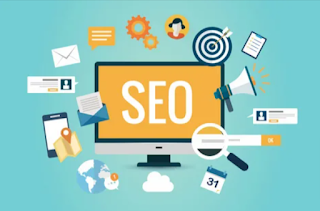On-Page SEO: How to Improve Pages and Outperform Competitors
“On-page SEO Adelaide” is the act of optimizing your website pages to rank higher in search engines. Starting with a great on-page optimization strategy can help you understand what users are looking for, which will help you find more relevant topic ideas and keywords to target with content. It also ensures that when people click on your website on Google, you’re giving them valuable information that meets their expectations for quality. That way, they’ll stay longer on your site and engage with your brand more.
Title Tags
Title Tags are the most important on-page SEO elements. Period.
They are also a very important part of Adelaide Search Engine Optimization, but not as much as they used to be. Therefore, this “most important” element has been moved from the title tag to another area: H1 tags and meta descriptions.
Meta Descriptions
Meta descriptions are one of the most important on-page SEO elements for both search engines and users. They are a short snippet that appears on search engine results pages (SERPs), usually below the result title and link.
Meta descriptions should be unique for each page on your website, so don’t just copy and paste from another page once you have written them all. They can also include keywords that are relevant to your site as well as any calls to action you would like visitors to take, such as click-throughs or signups.
The recommended length is between 150-160 characters, but this can vary depending on how much information you want to display in each description.
Header Tags
Header tags (H1, H2, H3) are the most important tags on your page. They appear as large bold text at the beginning of your web pages and help with both user experience and SEO.
There are many factors that determine how important a header tag is to Google, but one thing is certain:
If you want to be found by users, having an H1 headline makes it easier for Google to recognize what your site is about when compared with competitor sites.
Images and Alt Text
- The alt text should be descriptive, not just the file name.
- It should be 150-160 characters long, including spaces and punctuation.
- It should match the language of the page it’s on (and if using an English website, be written in English).
- It should read as a sentence, not like an instruction manual or bullet points: “A man drinking coffee at his desk” rather than “Coffee mug on wooden table” or “Two people sitting together” instead of “Group portrait showing three smiling faces.” If there are multiple images on one page, each image can have its own alt text block so that Google understands that they belong together.
Conclusion
And that’s how you can get started optimizing your pages for on-page SEO. Remember, though; there’s still a difference between user experience and search engine rankings. So don’t go crazy with keyword stuffing or adding too many images just because it might help your rankings. The best optimization happens when you combine the human element of design with keyword research to find the perfect balance for each page on your website. If you want to keep these headaches aside, leverage seo Adelaide services for your ranking requirement.




Comments
Post a Comment